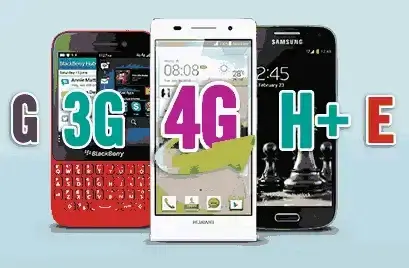The many generations and types of mobile communication technologies used in cell phones and other mobile devices are referred to by the designations 3G, 4G, H+, H, and E.
These technologies allow for wireless data transfer between gadgets and give users access to the Internet and other data services. You can better choose the appropriate mobile device and service package for your needs by understanding these words’ definitions and the capabilities of your smartphone.
Term 3G
The third generation of mobile communication technologies—also referred to as 3G—was created in the 1990s and the early 2000s. The third generation of technologies, or 3G, were created to transmit data more quickly and reliably than the 2G or second generation of technologies.
Different technologies for data transmission, including CDMA (Code Division Multiple Access) and GSM, are used by 3G technologies (Global System for Mobile Communications). Higher data transmission rates and more sophisticated capabilities like video calling and streaming video are also supported by 3G technologies.
Term 4G
The newest generation of mobile communication technologies, known as 4G, were created in the late 2000s and early 2010s. With data transfer speeds that are many times faster than 3G, 4G technologies are intended to offer data transmission that is even faster and more dependable than 3G technologies.
Advanced capabilities like high-definition video streaming and quicker download times are also supported by 4G technology. Long-Term Evolution (LTE) and WiMAX (Worldwide Interoperability for Microwave Access) are two examples of 4G technologies that are only intended for data transfer and do not permit voice communications.
Other 4G technologies, including those based on CDMA2000 and GSM, enable both voice and data connection.
Term H+
H+, sometimes known as 3.5G or 3G+, is a word that is occasionally used to refer to a high-speed version of 3G. In locations where 4G coverage is not yet available, H+ technologies, which are intended to enable faster data transmission rates than normal 3G technologies, are frequently employed.
HSDPA (High-Speed Downlink Packet Access) and HSUPA are two separate data transmission technologies and protocols used by H+ technologies, which operate in the same frequency range as 3G technologies (High-Speed Uplink Packet Access).
Term H
HSPA, a form of 3G technology, is referred to by the letter H. (High-Speed Packet Access). HSPA technologies are frequently utilized as a transitional technology between 3G and 4G technologies since they are intended to offer quicker data transmission rates than normal 3G technologies.
While HSDPA and HSUPA are used for data transmission in HSPA technologies, they are not used in 3G technologies that use the same frequency band.
Term E
The name “E” is used to refer to EDGE, a form of 2G technology (Enhanced Data rates for GSM Evolution). In locations where 3G or 4G coverage is not yet available, EDGE technologies, which are intended to deliver faster data transmission rates than conventional 2G technologies, are frequently deployed.
While EDGE uses the same frequency range as 2G technologies, it transmits data using distinct methods and protocols, such as 8PSK (Phase Shift Keying) modulation.
In conclusion, the names 3G, 4G, H+, H, and E refer to several mobile communication technologies utilized in smartphones and other mobile devices.






















+ There are no comments
Add yours